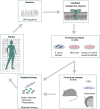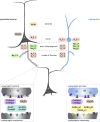Ion Channels in Genetic Epilepsy: From Genes and Mechanisms to Disease-Targeted Therapies
- PMID: 29263209
- PMCID: PMC5738717
- DOI: 10.1124/pr.117.014456
Ion Channels in Genetic Epilepsy: From Genes and Mechanisms to Disease-Targeted Therapies
Abstract
Epilepsy is a common and serious neurologic disease with a strong genetic component. Genetic studies have identified an increasing collection of disease-causing genes. The impact of these genetic discoveries is wide reaching-from precise diagnosis and classification of syndromes to the discovery and validation of new drug targets and the development of disease-targeted therapeutic strategies. About 25% of genes identified in epilepsy encode ion channels. Much of our understanding of disease mechanisms comes from work focused on this class of protein. In this study, we review the genetic, molecular, and physiologic evidence supporting the pathogenic role of a number of different voltage- and ligand-activated ion channels in genetic epilepsy. We also review proposed disease mechanisms for each ion channel and highlight targeted therapeutic strategies.
Copyright © 2017 by The American Society for Pharmacology and Experimental Therapeutics.
Figures



References
-
- Abed HS, Fulcher JR, Kilborn MJ, Keech AC. (2016) Inappropriate sinus tachycardia: focus on ivabradine. Intern Med J 46:875–883. - PubMed
-
- Akazawa C, Shigemoto R, Bessho Y, Nakanishi S, Mizuno N. (1994) Differential expression of five N-methyl-D-aspartate receptor subunit mRNAs in the cerebellum of developing and adult rats. J Comp Neurol 347:150–160. - PubMed
Publication types
MeSH terms
Substances
LinkOut - more resources
Full Text Sources
Other Literature Sources
Medical

